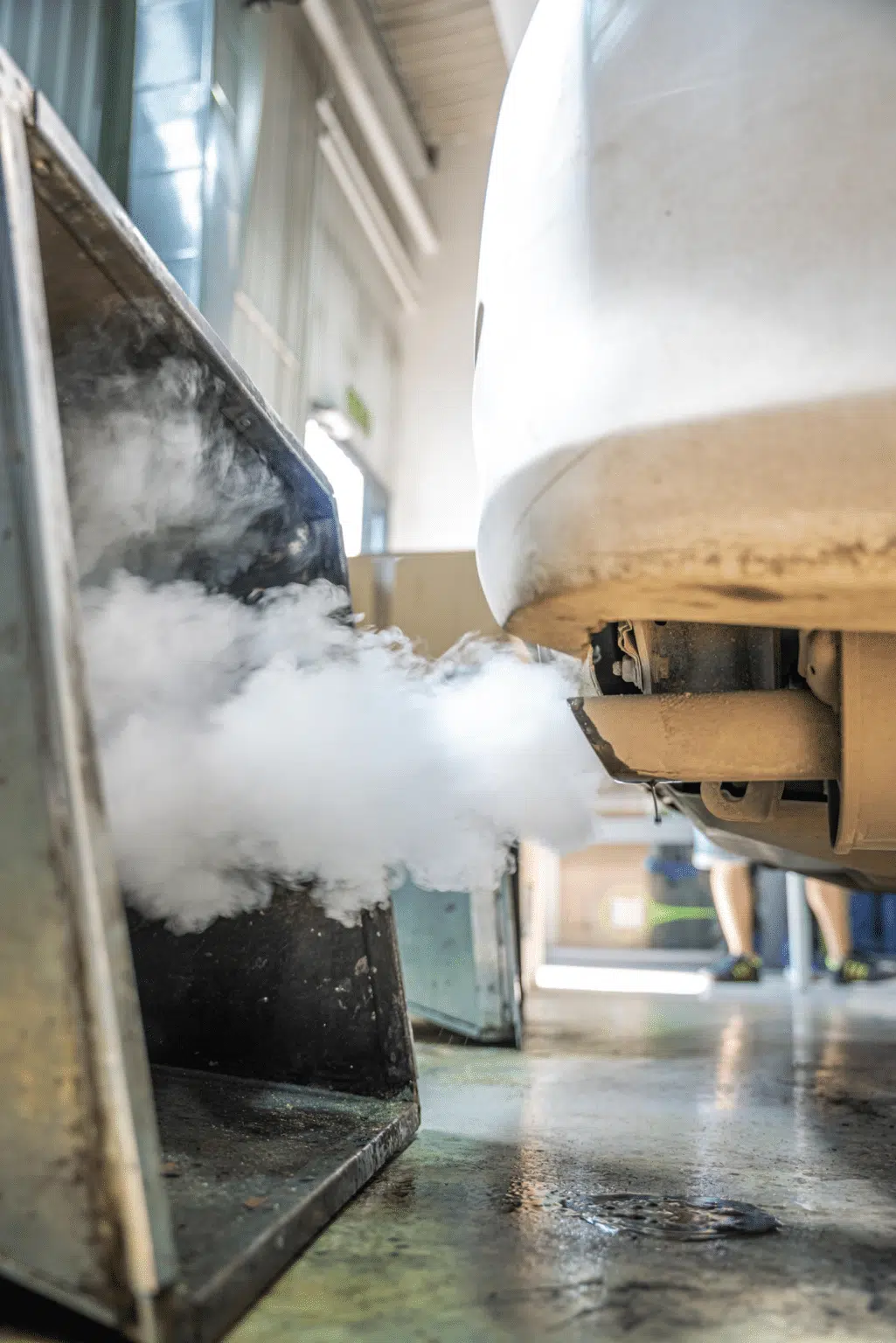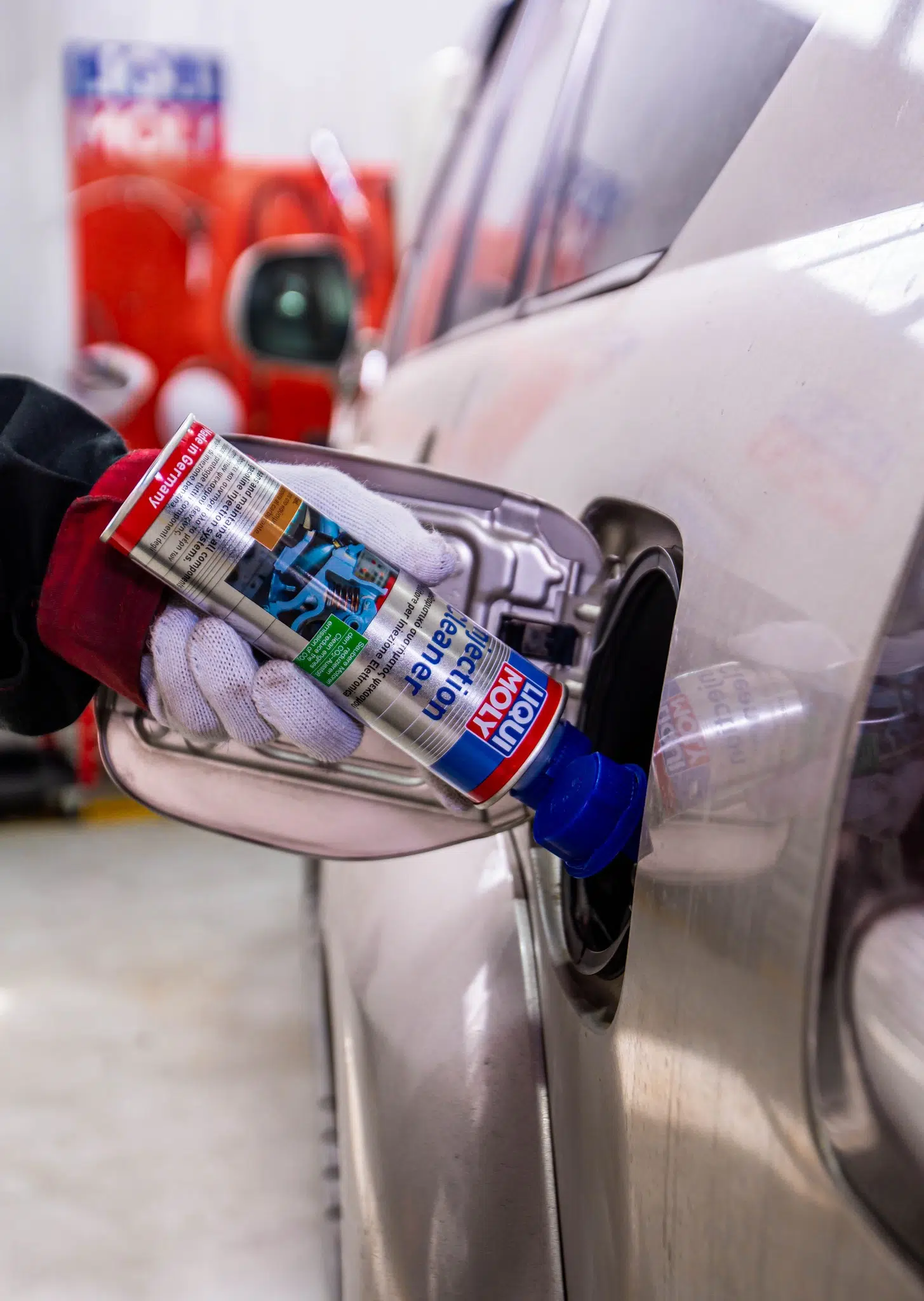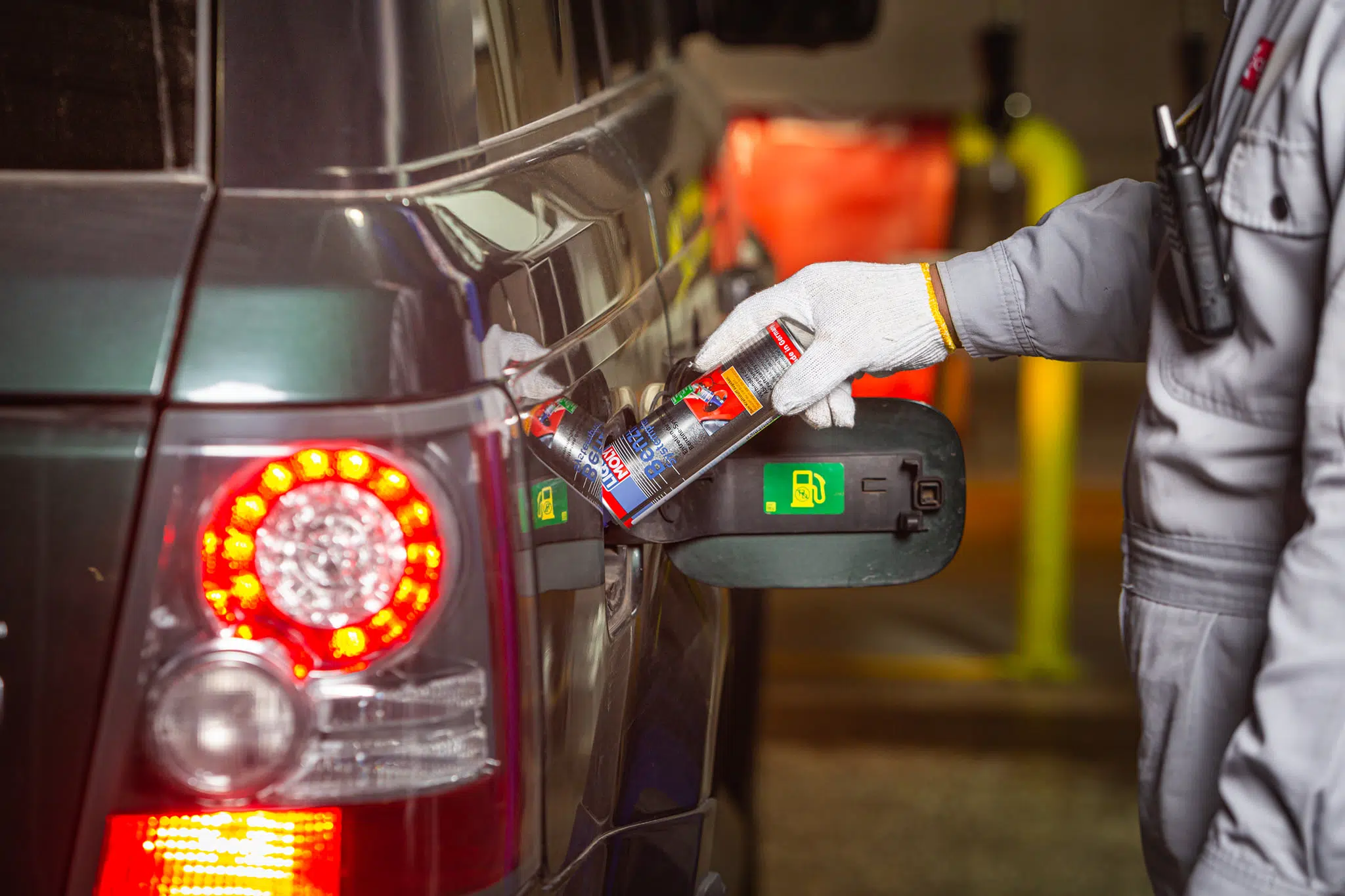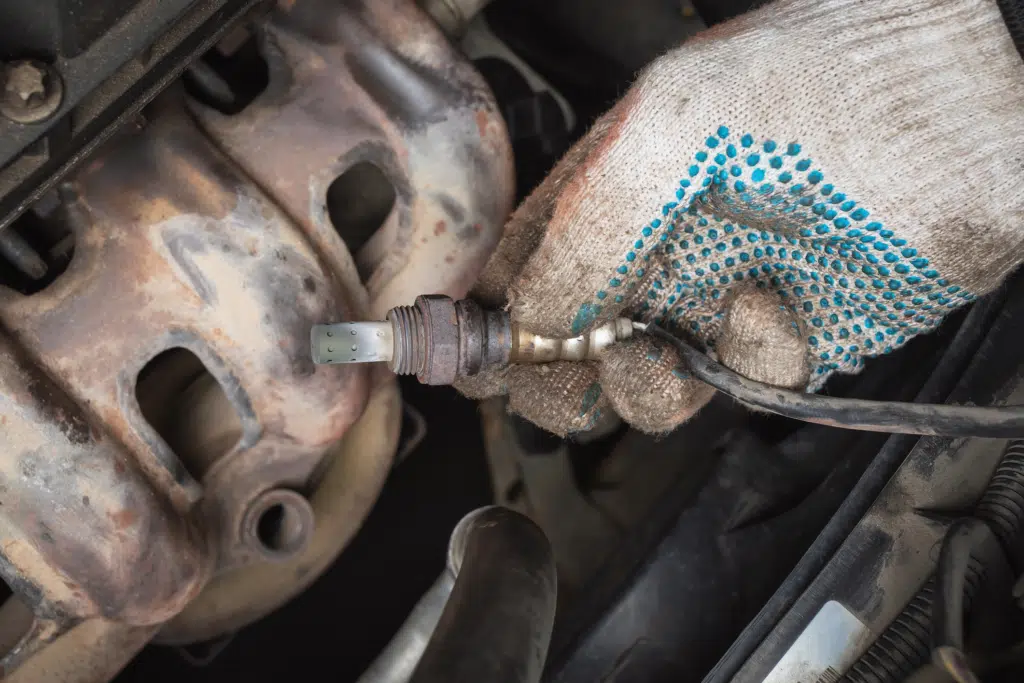Maintaining a clean and efficient engine is not just about improving performance; it’s about reducing our impact on the environment and staying compliant with emission regulations. One often overlooked component in this equation is the lambda sensor. Are you aware of the vital role lambda sensors play in regulating emissions and fuel efficiency? In this blog post, we will explore the importance of lambda sensors, how to use lambda sensors cleaner, and how to maintain optimal engine performance to minimize environmental impact and ensure legal compliance.
Key Takeaways
Lambda sensor cleaners remove carbon deposits and contaminants, improving engine performance and reducing emissions.
Selecting the right cleaner should be based on factors such as type, engine compatibility & quality ratings.
Regular maintenance tasks like cleaning sensors are essential for optimal engine performance & legal compliance with emission regulations.
Understanding Lambda Sensor Cleaners

When it comes to engine performance and emission control, lambda sensors are the unsung heroes. They monitor oxygen levels in the exhaust gases, ensuring optimal fuel combustion and a cleaner catalytic converter. But like any other component, lambda sensors can get dirty, and that’s where lambda sensor cleaners come in.
These cleaners work by:
Removing carbon deposits and contaminants that can hinder performance
Improving cleanliness
Ensuring the ideal functioning of the lambda sensors and the catalytic converter
Ultimately reducing emissions.
The Function of Lambda Sensors
Optimizing fuel combustion in your engine is a task efficiently performed by Lambda sensors, also known as oxygen sensors. They measure the concentration of oxygen in the exhaust gases and transmit this information to the engine’s computer, which then adjusts the air-fuel ratio as necessary.

Get help for your car from our AI Car Expert!
Petrol hybrid engines rely heavily on this process, with a functioning lambda sensor playing a significant role in enhancing fuel efficiency, reducing emissions, and monitoring the entire fuel system to improve engine performance. Regular cleaning of the lambda sensor and proper fuel system maintenance, such as using products like Liqui Moly’s or Wynns catalytic converter cleaner, can help achieve optimal engine performance.
How Lambda Sensor Cleaners Work
The effectiveness of lambda sensor cleaners stems from their ability to:
Dissolve and eliminate carbon deposits and other contaminants from the sensor
Restore the sensor’s functionality
Ensure it accurately measures the oxygen levels in the exhaust gases
By eliminating these damaging build-ups, the cleaner restores the sensor’s functionality, ensuring it accurately measures the oxygen levels in the exhaust gases.
This, in turn, helps the engine control unit make necessary adjustments to optimize the performance of the catalytic converter and reduce emissions. In essence, using a lambda sensor cleaner is a simple yet powerful way to enhance engine performance and keep your vehicle running efficiently.
Benefits of Using Lambda Sensor Cleaners
Using a lambda sensor cleaner not only ensures optimal functioning of the lambda sensor and catalytic converter, but also brings several additional benefits. For one, it increases fuel economy, restoring lost power and performance.
Additionally, it helps avoid costly replacements of the catalytic converter, which can be a significant expense for vehicle owners. With the cleaner language product code, lambda cleaner catalytic converter products are an excellent investment for anyone looking to improve their vehicle’s fuel efficiency, reduce emissions, and extend the life of their lambda sensors and catalytic converters.
Selecting the Right Lambda Sensor Cleaner

Understanding the importance of lambda sensor cleaners paves the way for the next step, which is selecting the appropriate product for your vehicle. This decision should be based on the type of cleaner, engine compatibility, and top product recommendations.
In the following sections, we will guide you through these factors to ensure you choose the perfect lambda sensor cleaner to keep your engine running smoothly and efficiently.
Types of Lambda Sensor Cleaners
There are several types of lambda sensor cleaners available in the market, including liquid and aerosol cleaners. For instance, Oxicat Lambda Sensor Cleaner is a liquid cleaner specifically designed to eliminate deposits from the oxygen sensor and catalytic converter.
On the other hand, Wynn’s Catalytic Converter & Oxygen Sensor Cleaner is an aerosol cleaner that serves the same purpose as a wynn’s catalytic converter cleaner. Both types of cleaners are meant to be used in conjunction with a fuel system cleaner to guarantee optimal engine performance.
The choice between liquid and aerosol cleaners ultimately depends on your personal preference and ease of use.
Compatibility with Engine Types
Prior to selecting a lambda sensor cleaner, ensure its compatibility with your engine type. Lambda sensor cleaners are generally compatible with a range of engine types, including gasoline, diesel, and hybrid. However, the compatibility may vary according to the particular brand and model of the cleaner.
It’s always advisable to refer to the manufacturer’s instructions or seek advice from a professional regarding the compatibility of the lambda sensor cleaner with your specific engine type.
Top Product Recommendations from LIQUI MOLY, Wynn’s, Mannol
When it comes to choosing a reliable and effective lambda sensor cleaner, some top product recommendations include LIQUI MOLY Lambda Sensor Cleaner, Wynn’s Catalytic Converter & Lambda Cleaner, and Mannol Lambda Sensor Cleaner. These products have been tried and tested by numerous users and have proven effective in cleaning lambda sensors, restoring engine performance, and reducing emissions.
By selecting one of these top-rated products, you can ensure that your vehicle’s lambda sensors and catalytic converter remain in optimal working condition, ultimately benefiting the environment and your wallet.
Step-by-Step Guide to Cleaning Your Lambda Sensor
With the right lambda sensor cleaner for your vehicle selected, we can now embark on the actual cleaning process. In this section, we will provide you with a step-by-step guide on how to safely clean and reinstall your lambda sensor, ensuring optimal engine performance and reduced emissions.
First, you should disconnect the lambda sensor from the engine. Make sure to use the appropriate tools.
Preparing the Lambda Sensor for Cleaning
The first step in cleaning your lambda sensor is to remove it from the exhaust system. To do this, you’ll need to disconnect the electrical connector and then unscrew the sensor from the exhaust pipe. Make sure you take the necessary precautions to avoid damaging the sensor during removal.
Once the lambda sensor has been successfully removed, you can proceed with the cleaning process.
Applying the Lambda Sensor Cleaner
Prior to applying the lambda sensor cleaner, ensure you have carefully read and understood the product instructions. Generally, you’ll need to spray the cleaner onto the sensor, making sure it covers the entire surface area.
Allow the cleaner to sit for the recommended amount of time, as specified in the product instructions. This will ensure that the cleaner has enough time to dissolve and remove the carbon deposits and contaminants from the sensor.
Reinstalling the Cleaned Lambda Sensor
Once the lambda sensor has been thoroughly cleaned, it’s time to reinstall it in your vehicle. To do this, follow these steps:
Reconnect the electrical connector.
Securely fasten the sensor back into the exhaust pipe.
Use a combination spanner or torque wrench to tighten the sensor and ensure a proper fit.
After reinstalling the cleaned lambda sensor, reset any error codes, and you’re all set! Your vehicle should now be running more efficiently, with reduced emissions and improved engine performance.
Maintaining Optimal Engine Performance

While cleaning your lambda sensor contributes to maintaining optimal engine performance, there are other aspects to consider as well. In this section, we will discuss other essential maintenance tasks that should be performed regularly to ensure your engine runs smoothly and efficiently.
By staying on top of these maintenance tasks, you can prolong the life of your vehicle’s components, save money on costly repairs, and contribute to a cleaner environment.
Regular Catalytic Converter Cleaning
Reducing harmful emissions from your engine is a task facilitated by the catalytic converter. Over time, deposits can accumulate inside the converter, causing it to become clogged and inefficient. To prevent this, regular catalytic converter cleaning is essential.
Select a commercial cleaner specifically formulated for your engine type and add it to your gas tank according to the product instructions. By doing this, you can prevent clogging and ensure that your catalytic converter remains efficient and effective in reducing emissions.
Fuel System Maintenance
Maintaining a clean and well-functioning fuel system, including the fuel tank, is another key to ensuring optimal engine performance. This includes regularly inspecting and replacing fuel filters, spark plugs, and other components.

It’s also a good idea to use fuel injector cleaners and fuel additives to keep your fuel system clean and functioning efficiently. By maintaining your fuel system, you can improve your engine’s performance, reduce emissions, and extend the life of your vehicle’s components.
Preventing Carbon Build-Ups with Fuel Additives
Reduced engine performance and increased emissions can result from damaging carbon build ups forming on the internal components of your engine such as valves, pistons, and spark plugs. To prevent these build-ups, consider using high-quality fuel and additives that can help break down deposits and inhibit their formation.

By incorporating a fuel additive into your regular maintenance routine, you can keep your engine clean and efficient, ultimately contributing to a cleaner environment and better overall performance.
Troubleshooting Common Lambda Sensor Issues

Despite regular maintenance, issues with the lambda sensor can still occur. In this section, we’ll help you troubleshoot common lambda sensor problems and determine when it’s time to replace the sensor.
By addressing these issues promptly, you can prevent further damage to your engine and ensure optimal performance and efficiency. Our solution restores engine performance, keeping your vehicle running smoothly.
Identifying Lambda Sensor Problems
Common issues associated with lambda sensors include:
Defective or worn-out sensors
Contamination
Wiring or connector issues
Exhaust leaks
Failure of the sensor heating element
Incorrect positioning of the sensor
Identifying these problems involves monitoring error codes, fuel efficiency, and emission levels. If you notice any of these signs, it’s essential to address the issue as soon as possible to prevent further damage to your engine.
Solutions for Restoring Efficiency
Identifying a problem with your lambda sensor opens up several solutions for restoring efficiency. These may include cleaning the sensor, resetting error codes, or adjusting the air-fuel ratios.
It’s important to address any issues promptly to prevent further damage to your engine and ensure optimal performance and efficiency.
When to Replace a Lambda Sensor
At times, cleaning may not resolve the issue with your lambda sensor, or the sensor might be irreparably damaged. In these cases, it’s necessary to replace the lambda sensor. By replacing a faulty sensor, you can restore your engine’s performance, reduce emissions, and prevent damage to other components of your vehicle.
It’s essential to address sensor issues promptly to maintain optimal engine performance and ensure a cleaner environment.
Legal Compliance and Environmental Impact

Maintaining a clean and efficient engine not only ensures optimal performance, but also helps minimize environmental impact and maintain compliance with emission regulations.
Be sure to adhere to the safety measures for handling and disposing of lambda sensor cleaner products as outlined by the manufacturer and relevant regulatory bodies.
By following local environmental regulations and guidelines, you can do your part in ensuring your actions reduce emissions, contributing to a cleaner, greener future for all.
Summary
In conclusion, proper maintenance of your lambda sensor is essential for optimal engine performance, reduced emissions, and compliance with environmental regulations. By understanding the importance of lambda sensors, selecting the right cleaner, and following a step-by-step guide to cleaning and maintaining your sensor, you can ensure your vehicle runs smoothly and efficiently while minimizing its impact on the environment. So, take action today and give your lambda sensor the attention it deserves. Your engine, wallet, and the planet will thank you.
Frequently Asked Questions
Can Lambda sensors be cleaned?
It is not recommended to clean Lambda sensors with a wire brush or an aerosol cleaner.
Removing them is not safe either. The easiest way to clean the Lambda Sensor and Catalytic converter is by using a Catalytic converter and lambda cleaner fuel additive into the fuel tank.
What is the primary function of a lambda sensor?
A lambda sensor measures the oxygen levels in an engine’s exhaust gases to ensure efficient fuel combustion and improved emissions control.
Are all lambda sensor cleaners compatible with my engine type?
It’s important to check the manufacturer’s instructions or seek professional advice to determine whether a particular lambda sensor cleaner is compatible with your engine type. Fuel additives can be used for all cars.
When should I replace my lambda sensor?
If your lambda sensor isn’t responding to cleaning, it’s time to replace it in order to maintain optimal engine performance and reduce emissions.
